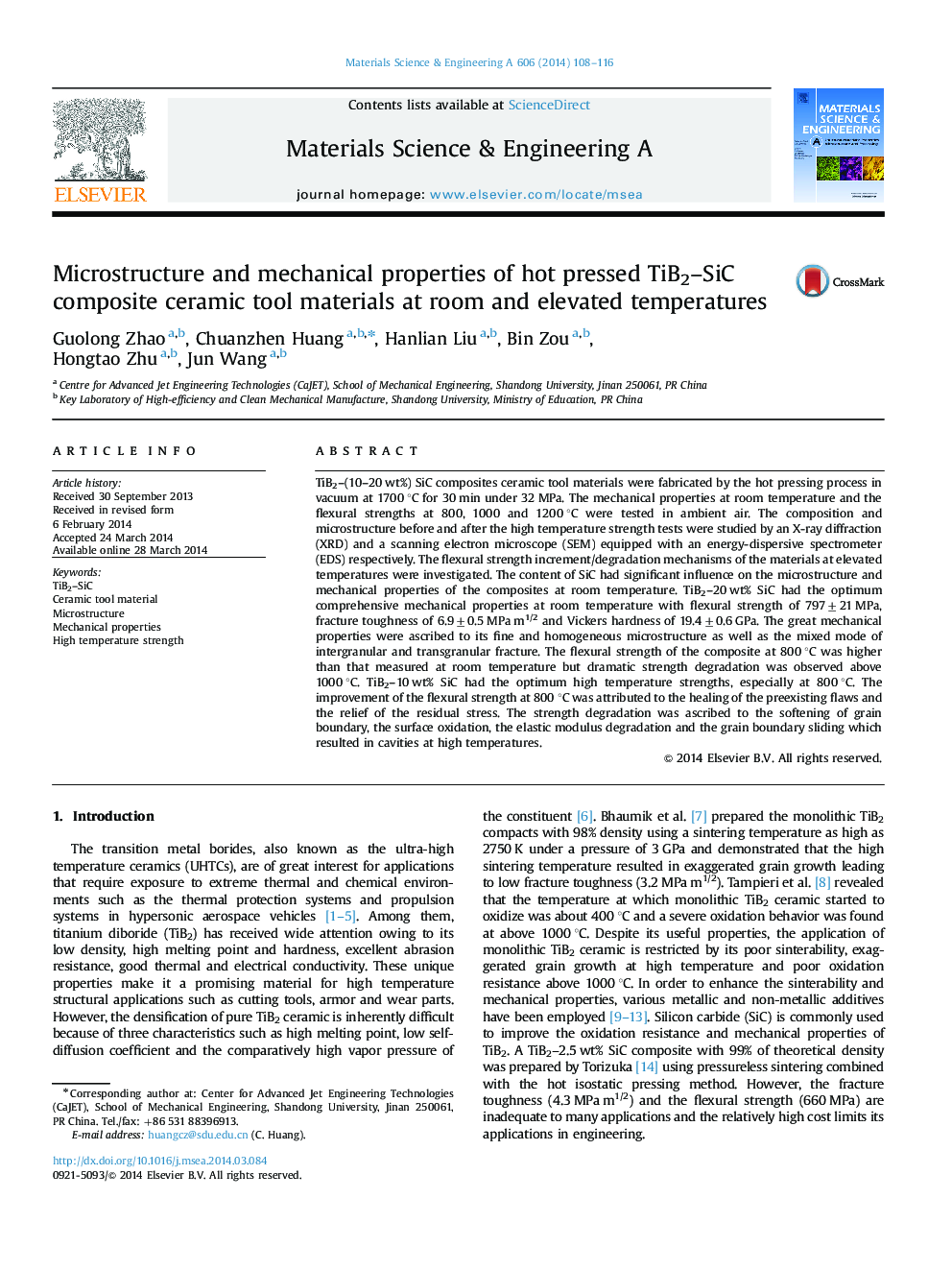| کد مقاله | کد نشریه | سال انتشار | مقاله انگلیسی | نسخه تمام متن |
|---|---|---|---|---|
| 1575039 | 1514737 | 2014 | 9 صفحه PDF | دانلود رایگان |
عنوان انگلیسی مقاله ISI
Microstructure and mechanical properties of hot pressed TiB2-SiC composite ceramic tool materials at room and elevated temperatures
دانلود مقاله + سفارش ترجمه
دانلود مقاله ISI انگلیسی
رایگان برای ایرانیان
کلمات کلیدی
موضوعات مرتبط
مهندسی و علوم پایه
مهندسی مواد
دانش مواد (عمومی)
پیش نمایش صفحه اول مقاله

چکیده انگلیسی
TiB2-(10-20 wt%) SiC composites ceramic tool materials were fabricated by the hot pressing process in vacuum at 1700 °C for 30 min under 32 MPa. The mechanical properties at room temperature and the flexural strengths at 800, 1000 and 1200 °C were tested in ambient air. The composition and microstructure before and after the high temperature strength tests were studied by an X-ray diffraction (XRD) and a scanning electron microscope (SEM) equipped with an energy-dispersive spectrometer (EDS) respectively. The flexural strength increment/degradation mechanisms of the materials at elevated temperatures were investigated. The content of SiC had significant influence on the microstructure and mechanical properties of the composites at room temperature. TiB2-20 wt% SiC had the optimum comprehensive mechanical properties at room temperature with flexural strength of 797±21 MPa, fracture toughness of 6.9±0.5 MPa m1/2 and Vickers hardness of 19.4±0.6 GPa. The great mechanical properties were ascribed to its fine and homogeneous microstructure as well as the mixed mode of intergranular and transgranular fracture. The flexural strength of the composite at 800 °C was higher than that measured at room temperature but dramatic strength degradation was observed above 1000 °C. TiB2-10 wt% SiC had the optimum high temperature strengths, especially at 800 °C. The improvement of the flexural strength at 800 °C was attributed to the healing of the preexisting flaws and the relief of the residual stress. The strength degradation was ascribed to the softening of grain boundary, the surface oxidation, the elastic modulus degradation and the grain boundary sliding which resulted in cavities at high temperatures.
ناشر
Database: Elsevier - ScienceDirect (ساینس دایرکت)
Journal: Materials Science and Engineering: A - Volume 606, 12 June 2014, Pages 108-116
Journal: Materials Science and Engineering: A - Volume 606, 12 June 2014, Pages 108-116
نویسندگان
Guolong Zhao, Chuanzhen Huang, Hanlian Liu, Bin Zou, Hongtao Zhu, Jun Wang,